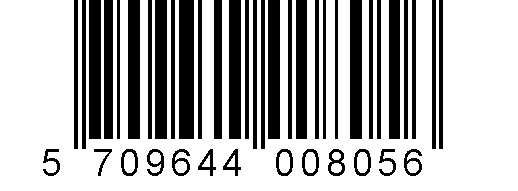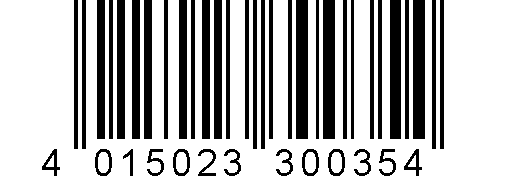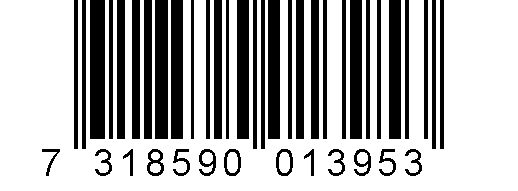Recordings with Traverso or Recorder
Media Review / Listening Diary 2013-12-21
2013-12-21 — Original posting (on Blogger)
2014-01-16 — Minor amendments
2014-11-10 — Re-posting as is (WordPress)
2016-07-15 — Brushed up for better readability
Table of Contents
Two CDs
Die Blockflöte im Barock / Leif Ramløv Svendsen
Die Blockflöte im Barock
Compositions by F.Barsanti, G.Ph.Telemann, J.B.Loeillet de Gant, J.M.Leclair
Leif Ramløv Svendsen, recorder
Mogens Rasmussen, viols; Viggo Mangor, archlute; Allan Rasmussen, harpsichord
claves CD 50-2112 (2 CDs, stereo); ℗ / © 2001 — Currently not available

Jean-Marie Leclair / Barthold Kuijken
Jean-Marie Leclair: The Complete Flute Sonatas
Barthold Kuijken, flauto traverso (G.A. Rottenburgh, Brussels, ca. 1690),
Wieland Kuijken, Viola da gamba; Robert Kohnen, harpsichord
Accent ACC 30035 (2 CDs, stereo); © 1984

A Gift CD and its Contents
The first CD above “Die Blockflöte im Barock” was a gift that we kindly received when buying two recorders from Heinz Ammann (Wollerau, Switzerland). I’ll refer to this also in another posting. In a separate review I discuss the one Telemann Fantasia (Nr.2 in D minor), also part of that CD. All other pieces on the CD are with basso continuo. The main artist is Leif Ramløv Svendsen, the continuo players are Mogens Rasmussen (viola da gamba), Viggo Mangor (archlute), and Allan Rasmussen (harpsichord). The recording was made in March 2000. All recorders played on this CD are manufactured by Heinz Ammann (Wollerau, Switzerland). This can serve as a sampler, demonstrating the sound of recorders from this (1-man) workshop.
The compositions on this CD and the recorder models in use are
- Francesco Barsanti (1690 – 1770): Sonata in D minor, op.1/1, for alto recorder (f’, after T.Stanesby) and B.c.
- Anonymous: Green Sleeves to a Ground (from “The Division Flute”, London, 1706), for alto recorder (f’, after T.Stanesby) and B.c.
- Georg Philipp Telemann (1681 – 1767): 4 pieces from “Der getreue Musikmeister”, for soprano recorder (c”, after B.Reich) and B.c.
- Telemann: Sonata in D minor for alto recorder (f’, after I.H.Schell), viola da gamba and B.c.
- Telemann: Fantasia Nr.2 in A minor, for tenor recorder solo (c’, after I.H.Schell)
- Jean Baptiste Loeillet de Gant (1688 – 1720): Sonata in G major op.1/3, for alto recorder (f’, after I.H.Rottenburgh) and B.c.
- Jean Marie Leclair (1697 – 1764): Trio sonata op.2/8 in D major, for voice flute (tenor recorder in d’, after P.I.Bressan), viola da gamba and B.c.
General Remarks on the Recording
As this really is a “recorder demo CD”, let me first mention the recorders: a single CD can hardly demonstrate the entire spectrum of the recorders that Heinz Ammann makes. Still, I would say that it covers at least a type of recorder that we like (and just received from that workshop this summer): instruments with a distinct “character”, with some (slight) “grainy robustness” (rather than just a soft, smooth & neutral tone). I don’t really need to state that I like their sound!
This is a good, solid interpretation of baroque music, maybe sometimes a tad straight in the rhythm. As the soloist is blind and hence can’t maintain visual contact with his partners, he may tend to avoid taking risks in the coordination. Maybe there is a slight deficit in p/pp tones / nuances (too handsome, overall). Sure, Svendsen can’t fully compete with musicians such Dan Laurin, Maurice Steger, or Dorothee Oberlinger. These offer more refinement, more fantasy and flexibility in the ornaments, in dynamics, articulation, and in the rhythm. Still, Svendsen’s interpretation isn’t bad at all.
As for the recording: the recorder is in the center of this collection, its sound is captured very well. The microphones are placed close enough for the listener to get a good idea about the sound of Ammann’s instruments, within the dynamic scope of these interpretations. The continuo would deserve a bit more spacial resolution & plasticity: the viola da gamba sound is OK, but the harpsichord often hides behind the viol, appears to “emerge from the same spot / location”.
More on the Contents
About the compositions: the “Green Sleeves to a Ground” are fairly well known. It’s a set of variations on a popular English folk song—an early earworm of sorts. The other pieces are part of the repertoire for recorder and/or traverso, but may not sound immediately familiar to the average (non-specialist) audience. It’s all nice, pleasant baroque music. Telemann is definitely well-known as a composer, but he has written much, much more than the average listener will ever cover. I particularly like the sonata by Jean Baptiste Loeillet de Gant (or Loeillet de Ghent—the “location appendix” was added as a differentiator towards his cousin Jean-Baptiste Loeillet of London, 1680 – 1730, a.k.a. John Loeillet).
Jean-Marie Leclair: Sonata op.2/8 in D major
About the last piece on this CD, Jean-Marie Leclair‘s Sonata op.2/8 in D major, “A trois avec un violon ou flûte allemande, une viole et clavesin”: here, I have a second recording. This is played on the flauto traverso, the instrument for which the piece was really written. The artist is Barthold Kuijken. Kuijken is accompanied by Wieland Kuijken (viola da gamba) and Robert Kohnen (harpsichord). This piece is included on the second CD (set) shown above, recorded in 2000.
Leclair was an interesting figure, known as having been murdered, possibly by his nephew. Almost all of his compositions were for the violin; with a few the composer specified the flûte traversière (i.e., traverso) as alternative instrument. There were also a few compositions specifically written for the traverso. Barthold Kuijken’s recording covers all compositions for traverso (a.k.a. flûte allemande), or pieces which specify the traverso as possible alternative. Strictly speaking, the recorder therefore is inappropriate. From the tonal range and the technical possibilities, the Sonata op.2/8 can definitely (as most compositions for the traverso) be played on the recorder. I would not regard this as a sacrilege.
Comparison of the Two Recordings
However, in this sonata (which is the one I like most in Barthold Kuijken’s recording, a very touching, often melancholic piece, especially the Sarabande: Largo movement), Barthold Kuijken’s interpretation is simply way better than Svendsen’s. The accompaniment is excellent, especially the viola da gamba, played by Barthold Kujken’s elder brother Wieland. This recording is also better technically. The viola da gamba appears spatially separated from the traverso, clearly as an equal-value duo partner. Unfortunately, the harpsichord is often even more in the background than in Svendsen’s recording.
Overall, Barthold Kuijken’s interpretations on this double-CD set is excellent. It’s 119 minutes overall. One would not listen to all these sonatas at once, for sure. Barthold Kuijken plays a historic instrument by G.A. Rottenburgh (Brussels, ca. 1690): an instrument with a very nice, soft sound. Note that in Kuijken’s recording of the Telemann Fantasias I find Kuijken’s sound slightly too soft (this may in parts be due to bad microphone placement). Here, I really like the sound, and overall, the flute’s softness in this recording is compensated or complemented by the viola da gamba & harpsichord accompaniment.
I only pulled up this CD set for the purpose of comparing the above Leclair sonata. I did not re-listen the entire set and therefore won’t add further comments at this point.
Stravaganze Napoletane / Dan Laurin, London Baroque
“Stravaganze Napoletane”
Compositions by F. Barbella, A. Corelli, D. Gallo, F. Mancini, J. Ravenscroft, D. Sarri, A. Scarlatti
BIS-CD-1395 (CD, stereo); ℗ / © 2004

A Mixed Bag CD — Contents
This CD “Stravaganze Napoletane” is one of several in our collection with mixed repertoire baroque music; this one was recorded in 2003. The artists are Dan Laurin (recorders by Frederick Morgan) and the ensemble London Baroque (Ingrid Seifert & Richard Gwilt, violins; Irmgard Schaller, viola; Charles Medlam, cello; Terence Charleston, harpsichord and chamber organ). The ensemble is playing on historic instruments (strings) or replicas of period instruments (harpsichord after Giusti by David Evans, 1999; chamber organ by William Drake, Buckfastleigh, 1982). The CD features the following compositions (in the order of the CD):
- Francesco Mancini (1672 – 1737): Sonata XIII in G minor (alto recorder in e’ flat), and Sonata II in E minor (voice flute in d’)
- Arcangelo Corelli (1653 – 1713): Fuga con un soggetto solo in D minor (for 2 violins, viola and cello)
- Domenico Sarri (1679 – 1744): Sonata XI in A minor (alto recorder in g’)
- Alessandro Scarlatti (1660 – 1725): Sonata IX in A minor (alto recorder in g’)
- Francesco Barbella (1692 – 1733): Sonata III in C major (alto recorder in f’)
- Domenico Gallo (1730 – 1768): Trio Sonata Nr.1 in G major (for 2 violins and basso continuo)
- John Ravenscroft (1665 – 1697): Sonata Ottava (for 2 violins and basso continuo)
Scope of the Compositions
All compositions with alto recorder or voice flute (tenor recorder in d’) are by composers from (or working in) the Naples area (hence the title of the CD). They originate from a single manuscript, dated 1725. In Venice, these sonatas (i.e., the pieces for recorder and strings on this CD) might have run under the name “concerti”. That’s what they sound like to me, even though there’s (in this recording) just one instrument per string voice.
Recording, Instruments
It’s all excellent, very decent playing. The continuo features a chamber organ, except for the sonata by Barbella, where a harpsichord serves as continuo instrument. Dan Laurin plays a set of recorders by Frederick Morgan, with a very nice, rounded, well-balanced sound. The recorder selection does not demonstrate variety in sound characteristics: most listeners won’t recognize major — if any — differences in the sound characteristics. The selection rather serves to accommodate the tonal range for these pieces, while maintaining optimum tuning. Keep in mind that recorders are not using equal-temperament tuning! Laurin uses one voice flute in d’ (one tone above a standard tenor recorder in c’), and alto recorders in e’ flat, f’ (standard alto), and g’, all presumably relative to a’ = 415 Hz.
The Recorder Sonatas on this CD
The recorder sonatas (as well as the sonata by Ravenscroft) all follow the scheme slow—fast—slow—fast, except for the Scarlatti sonata (Allegro—Largo—Fuga—Largo—Allegro). To me, the nicest of the Naples pieces is the sonata by Sarri with its melodic beginning with staccato accompaniment. The sighing beginning of the first movement in Barbella’s sonata strongly reminds me of the movement “Ses soupirs amoureux après la princesse Dulcinée” in Telemann’s “Bourlesque de Don Quixotte”, TWV 55. This makes me wonder whether Barbella’s sonata even inspired Telemann?
Music for Strings on the Same CD
The string music (Corelli, Gallo, Ravenscroft) does not really fall into the category of music from Naples. Corelli lived and worked in Rome. Ravenscroft may have been one of Corelli’s pupils or coworkers; this suggestion bases upon his style. Finally, we know very little about Gallo (mostly through church music in the libraries of the conservatories in Naples and Bologna). A few remarks, based on the liner notes:
- The nice fugue by Corelli stands out from the other compositions on this CD. In Francesco Maria Veracini’s treatise “Il Trionfo della Pratica Musicale” this composition is an example for a “true fugue with a single subject”. The alleged composer is “Gallario Riccoleno”. This turned out to be a free anagram of Corelli’s first and last names. The theme of the fugue was apparently popular. Composers from Byrd and Palestrina up to Handel used it. This fugue is played with strings and organ colla parte.
- The Trio Sonata by Gallo — 2 violins and basso continuo (cello and harpsichord), three movements without tempo annotation — may be an earworm before you have heard it for the first time: in the 19th century this was attributed to Giovanni Battista Pergolesi — and Igor Stravinsky picked the first movement for parts of his Pulcinella (ballet & suite, “after Pergolesi”) and for his “Suite Italienne”: most people will therefore instantly recognize the theme in the first movement.
- I particularly like the “Sonata ottava” by Ravenscroft, again for 2 violins and basso continuo (cello and harpsichord): a very nice, vivid composition, indeed!
Listening Diary Posts, Overview








